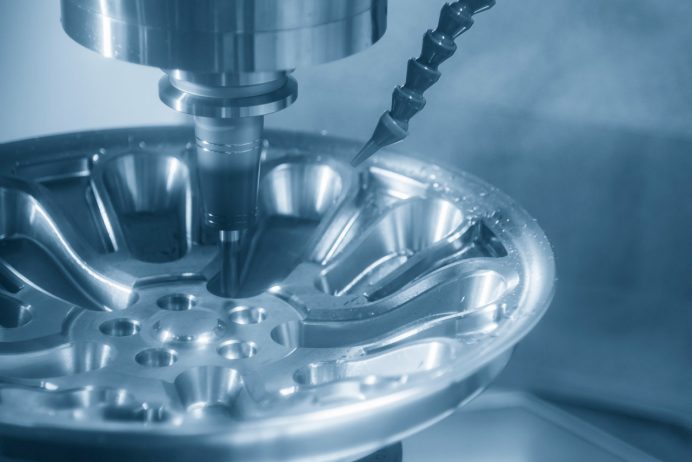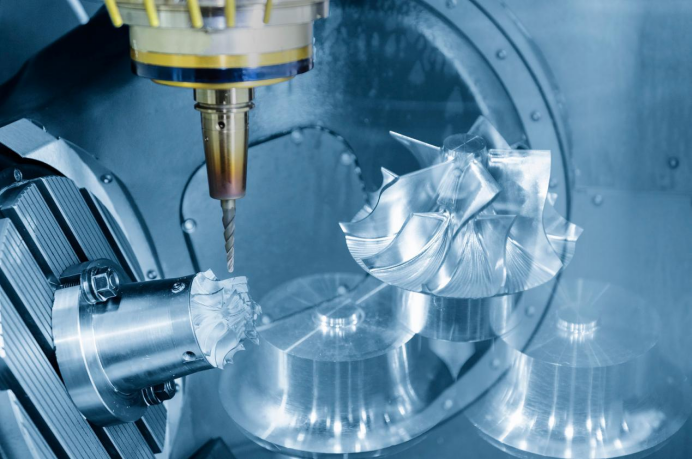In today's dynamic industrial environment, where efficiency, precision, and complexity are paramount, one technology consistently holds a pivotal position: CNC (Computer Numerical Control) machining. This technology, which transforms digital commands into physical realities, has not only revolutionized product manufacturing but has also granted designers unprecedented freedom, driving continuous innovation across various industries.

Traditional manufacturing processes often face immense challenges when dealing with complex curves, deep cavities, and intricate, non-standard structures. However, the advent of CNC machining has opened a gateway to endless possibilities. By directly importing intricate 3D models created in CAD software, CNC machines can precisely execute instructions, carving out complex curves, free-form surfaces, fine internal features, and multi-layered structures that were previously unattainable with conventional methods. Especially multi-axis (e.g., 5-axis) CNC machining enables continuous processing of multiple faces or complex curved surfaces in a single setup, significantly reducing error accumulation and allowing for the perfect realization of complex structures in challenging parts like aerospace turbine blades and medical implants. This liberation of design freedom is crucial for driving product differentiation and performance enhancement.
Another decisive advantage of CNC machining is its outstanding precision and high repeatability. Achieving consistent quality at micron or even sub-micron tolerance levels is virtually impossible with manual operations, whereas CNC machines can execute tasks precisely and flawlessly. This makes it the preferred manufacturing solution for industries with extremely high demands for reliability and performance:
Aerospace: Manufacturing critical structural components and engine parts, ensuring flight safety.
Medical Devices: Producing surgical tools, implants, and prosthetics that meet strict biocompatibility and precision requirements, directly impacting health and well-being.
Precision Instruments: Machining optical components and electronic device housings to guarantee stable performance.
Automotive Industry: Producing high-precision parts for engines, transmissions, and chassis components, enhancing vehicle performance and safety.
The stability and consistency of CNC machining ensure that every product in a batch production meets preset high standards, serving as the cornerstone for building high-quality products.
Beyond precision and complexity, CNC machining's contribution to production efficiency and cost optimization is equally significant. Its automated nature allows machines to operate continuously 24/7, greatly shortening production cycles. Through CAM software's path optimization and simulation, material waste can be minimized, leading to reduced production costs. Furthermore, CNC plays an accelerating role in the product development cycle:
Rapid Prototyping: Quickly transforming design proposals into highly functional physical prototypes, accelerating testing and validation.
Small-Batch Production: Providing efficient customized small-batch production for market testing or specific demands, without the need for expensive molds.
Flexible Adjustments: Easy and fast program modifications accommodate design iterations and customization needs.
This efficient and flexible production model helps businesses bring innovative products to market faster.

CNC machining technology is not static; it is constantly evolving with technological advancements:
Smart Connectivity (IoT): Real-time data collection and analysis enable inter-machine communication, building smart factories.
Artificial Intelligence and Machine Learning: AI is being used to optimize cutting parameters, predict tool life, and even assist in design, further enhancing machining efficiency and quality.
Hybrid Manufacturing: Combining with additive manufacturing technologies like 3D printing to achieve more complex functional integration and material combinations.
Human-Robot Collaboration: Deep integration of robots and automation systems with CNC machines further elevates automation levels and production flexibility.
CNC machining, as the soul of digital age industry, is not only a tool for achieving high-precision manufacturing but also a powerful engine for driving innovation, optimizing production processes, and meeting future market demands. It empowers humanity to turn the grandest design concepts into reality and shapes the modern world we live in at an unprecedented pace. With continuous technological progress, CNC machining will continue to serve as a core driving force, leading manufacturing into an era that is more intelligent, efficient, and infinitely possible.
